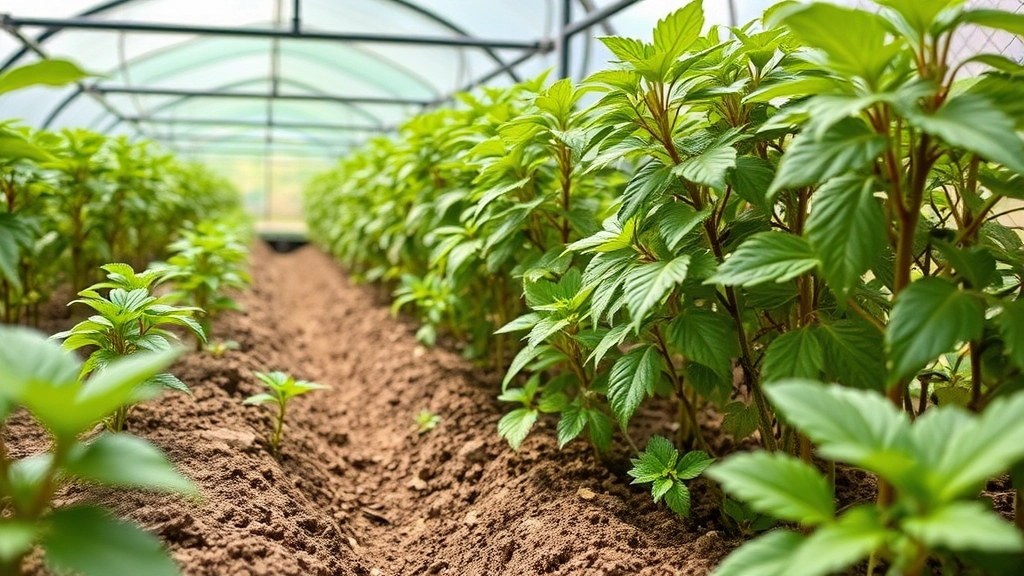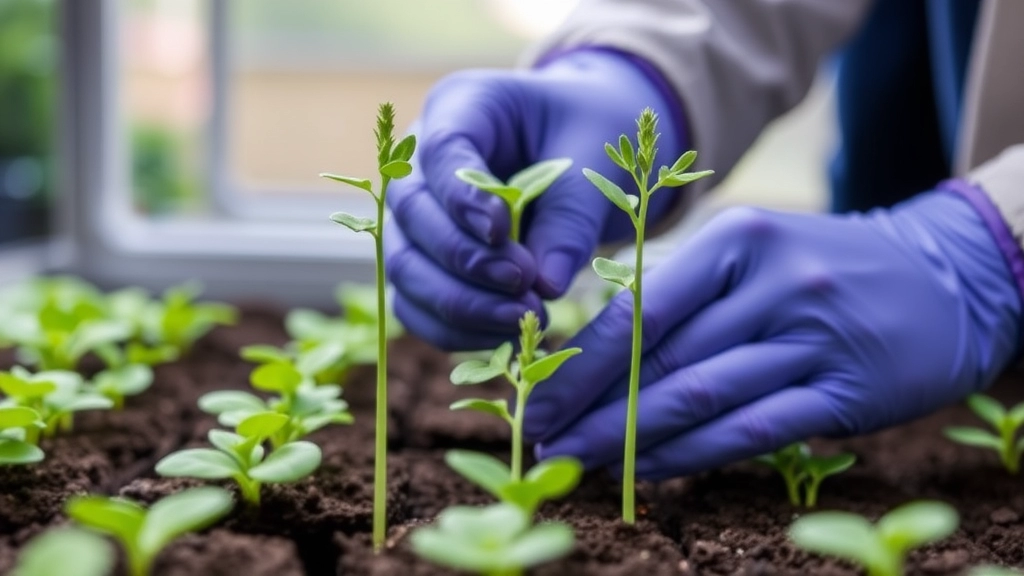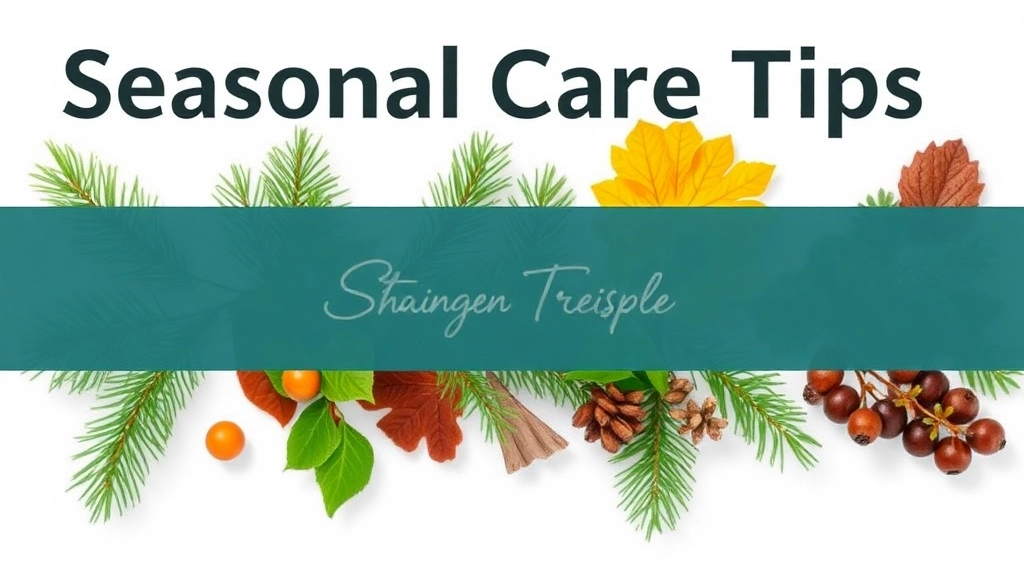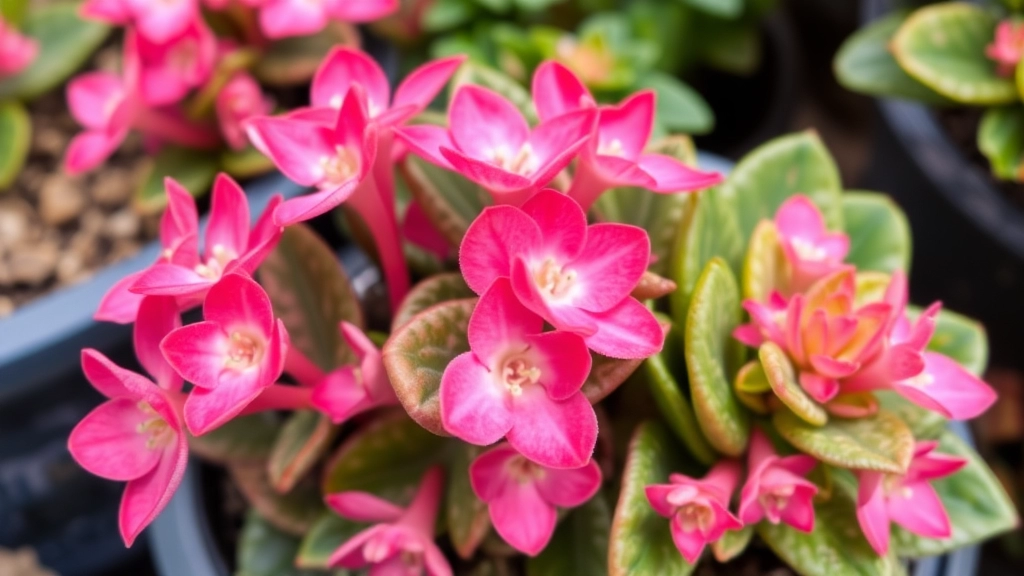Welcome to Kalanchoe fedtschenkoi
Welcome to the fascinating world of Kalanchoe fedtschenkoi, a stunning succulent that’s as easy to care for as it is beautiful to behold. In this comprehensive guide, we’ll explore everything from its unique characteristics to essential care tips, helping you become a Kalanchoe fedtschenkoi expert in no time.
From its eye-catching bluish-grey leaves with scalloped edges to its impressive drought tolerance, this compact beauty is a perfect addition to any plant collection. Whether you’re a seasoned gardener or a newcomer to the world of succulents, you’ll find valuable insights on how to help your Kalanchoe fedtschenkoi thrive and even propagate new plants from a single leaf.
Description and Characteristics of Kalanchoe fedtschenkoi
Alright, let’s dive into Kalanchoe fedtschenkoi. This plant’s a real stunner.
What’s the deal with this succulent? Well, it’s a looker, that’s for sure.
Kalanchoe fedtschenkoi, also known as Lavender Scallops, is a sight to behold.
Picture this: fleshy, oval leaves with scalloped edges. Cool, right?
But here’s the kicker – those leaves aren’t just green. They’ve got a bluish-grey tint.
And when the sun hits ’em just right? The edges turn a gorgeous pinkish-purple.
Now, let’s talk size. This plant’s not gonna take over your space.
It’s compact, usually growing about 30-45 cm tall. Perfect for small spaces or as a desk buddy.
But wait, there’s more. Kalanchoe fedtschenkoi isn’t just about looks.
It’s got some neat tricks up its sleeve. Ever heard of CAM photosynthesis?
Basically, this plant’s a water-saving champ. It’s like it’s got its own built-in drought survival kit.
And the flowers? When it blooms, you’re in for a treat.
Tiny, bell-shaped flowers in shades of pink or orange. They hang in clusters, like nature’s own chandelier.
Here’s a fun fact: this plant’s native to Madagascar. Exotic, right?
But don’t worry, it’s not high maintenance. It’s actually pretty chill to grow.
So, if you’re after a plant that’s both a looker and a low-key roommate, Kalanchoe fedtschenkoi might be your guy.
Ideal Growing Conditions

Alright, let’s chat about the perfect setup for your Kalanchoe fedtschenkoi. Trust me, I’ve been through the ringer with these beauties, and I’ve got some real-world tips to share.
First things first: these succulents are tough cookies. They’re not fussy, which is a massive win for us plant parents who don’t want to fret over every little detail. But hey, give ’em what they like, and they’ll thrive like nobody’s business.
Here’s the lowdown:
- Sunlight: These guys are sun worshippers. They’ll soak up those rays all day long.
- Temperature: Think warm, but not scorching. 60-75°F (15-24°C) is their sweet spot.
- Soil: Well-draining is the name of the game. No waterlogged roots, please!
- Water: Less is more. They’re drought-tolerant champs.
- Humidity: Not a big deal. They’re cool with dry air.
Now, here’s a nugget of wisdom I learned the hard way: don’t baby them. Seriously. I used to hover over my Kalanchoe like a helicopter parent, and it just stressed us both out. These plants are survivors, built to handle a bit of neglect.
Remember, Kalanchoe fedtschenkoi hails from Madagascar. Picture those sun-baked landscapes, and you’ll get why they’re so chill about most things. They’ve evolved to handle tough conditions, so your average living room is like a five-star resort to them.
But here’s the kicker: drainage. If there’s one thing that’ll make your Kalanchoe blossfeldiana throw a fit, it’s wet feet. I once popped mine in a cute pot without holes. Big mistake. Huge. The poor thing looked like it was auditioning for a zombie plant movie within weeks.
So, what’s the takeaway? Give your Kalanchoe fedtschenkoi plenty of light, don’t overwater, and make sure it’s got good drainage. Nail those basics, and you’re golden. These ideal growing conditions will set you up for success, and before you know it, you’ll be the proud parent of a thriving, beautiful Kalanchoe blossfeldiana succulent.
Soil and Potting Requirements
Alright, let’s dive into the soil and potting requirements for Kalanchoe fedtschenkoi.
Here’s the deal with this succulent:
It’s not fussy, but it does have some preferences.
First off, well-draining soil is a must. Why? These guys hate wet feet.
I mix regular potting soil with perlite or coarse sand. About 50/50 does the trick.
This combo gives the roots room to breathe and prevents water from hanging around too long.
Now, for pots:
- Go for ones with drainage holes. Non-negotiable.
- Terracotta pots are my go-to. They’re porous and help wick away excess moisture.
- But plastic or ceramic work too, just be extra careful not to overwater.
Size matters:
- Choose a pot that’s just a bit bigger than the root ball.
- Too much space? You’re asking for trouble with waterlogged soil.
Here’s a pro tip:
Add a layer of gravel at the bottom of the pot.
It’s like insurance against overwatering.
When it’s time to repot:
- Do it in spring or early summer.
- That’s when your Kalanchoe fedtschenkoi is in growth mode.
Remember:
The right soil and pot setup is like giving your plant a comfy home.
Get this right, and your Kalanchoe fedtschenkoi will thank you with healthy growth and maybe even some blooms.
Watering and Humidity Needs
Alright, let’s chat about keeping your Kalanchoe fedtschenkoi happy and hydrated. Trust me, it’s not as tricky as it sounds!
Water: Less is More
Here’s the deal with watering these succulents:
- They’re drought-tolerant champs
- Overwatering is their kryptonite
- Let the soil dry out completely between waterings
I learned this the hard way when I nearly drowned my first Kalanchoe. Rookie mistake, right? Now, I stick my finger in the soil â if it’s dry up to my knuckle, it’s watering time.
Seasonal Watering Tips:
- Summer: Water every 7-10 days
- Winter: Cut back to every 2-3 weeks
Pro tip: Always water at the base of the plant. Wet leaves can lead to fungal issues, and nobody wants that drama.
Humidity: Not a Big Deal
Good news! Kalanchoe fedtschenkoi isn’t fussy about humidity. They’re like the laid-back surfer of the plant world â they go with the flow.
Average room humidity? Perfect.
Dry indoor air? No problem.
Live in a humid area? They’ll manage.
But here’s a heads up: if you’re in a super humid spot, make sure there’s good air circulation. Stagnant, damp air can invite unwanted guests (aka pests and diseases).
The Watering Balancing Act
Finding the sweet spot with watering can be tricky. Too little, and your plant might look a bit sad. Too much, and you’re risking root rot.
Signs you’re overwatering:
- Yellowing leaves
- Soft, mushy stems
- Fungus gnats partying around your plant
Signs you’re underwatering:
- Wrinkled, droopy leaves
- Slow growth
- Crispy leaf edges
Remember, it’s easier to save an underwatered Kalanchoe than an overwatered one. When in doubt, hold off on the H2O.
Bottom line: Kalanchoe fedtschenkoi likes its water like I like my weekends â infrequent but thoroughly enjoyed. Keep an eye on your plant, adjust as needed, and you’ll nail those watering and humidity needs in no time. If you’re interested in learning more about watering specific Kalanchoe varieties, check out our guide on watering Kalanchoe tomentosa. For those looking to expand their Kalanchoe collection, you might want to explore the Kalanchoe blossfeldiana varieties available for sale.
Light and Temperature Preferences
Let’s chat about what Kalanchoe fedtschenkoi really digs when it comes to light and temp.
These succulents are sun-lovers, no doubt about it.
They thrive in bright, indirect light. Think of it as that sweet spot between full sun and shade.
But here’s the kicker – they can handle some direct sunlight too.
Just not too much, or you’ll end up with crispy leaves. Not cool.
Temperature-wise, these guys are pretty chill (pun intended).
They’re happy in normal room temps, between 15-24°C (59-75°F).
But here’s a pro tip: they can survive brief cold snaps down to about 10°C (50°F).
Just don’t make it a habit, yeah?
In winter, they actually prefer it a bit cooler. It helps them bloom better.
So, what’s the bottom line for Kalanchoe fedtschenkoi light and temp needs?
- Bright, indirect light is best
- Can handle some direct sun, but not too much
- Normal room temps are perfect
- Brief cold is okay, but not long-term
- Cooler winters = better blooms
Remember, every plant’s a bit different. Watch yours and see what it likes.
Happy growing, folks!
Propagation Techniques

Alright, let’s dive into how you can multiply your Kalanchoe fedtschenkoi collection without breaking a sweat. Trust me, it’s easier than you might think!
Leaf Cuttings: The Lazy Gardener’s Dream
Ever noticed those little plantlets growing on the edges of your Kalanchoe’s leaves? That’s nature’s way of saying, “Hey, propagate me!” Here’s how:
- Snip off a healthy leaf
- Let it dry for a day or two (this prevents rotting)
- Plop it on some well-draining soil
- Wait and watch the magic happen
Seriously, it’s that simple. These little guys are like the overachievers of the plant world – they’ll start growing roots and new plants without you even trying.
Stem Cuttings: For When You’re Feeling a Bit More Ambitious
If you’re up for a slightly more hands-on approach, stem cuttings are your ticket:
- Cut a 4-6 inch stem just below a leaf node
- Remove the lower leaves
- Let it callous over for a day
- Stick it in some moist, well-draining soil
- Keep it warm and give it bright, indirect light
Before you know it, you’ll have roots and new growth. It’s like watching your plant have babies, but way less messy.
Division: The “Divide and Conquer” Method
Got a big, bushy Kalanchoe fedtschenkoi? Time to divide and rule:
- Gently remove the plant from its pot
- Shake off excess soil
- Look for natural divisions or separate rooted sections
- Carefully pull apart or cut with a clean, sharp knife
- Repot each section in fresh soil
It’s like giving your plant a haircut and then watching each strand grow into a new plant. Pretty cool, right?
Pro Tips for Propagation Success:
- Use clean tools to avoid spreading diseases
- Be patient – good things come to those who wait (and water occasionally)
- Don’t overwater your cuttings or divisions – they’re prone to rot when young
Remember, propagating Kalanchoe fedtschenkoi is all about having fun and experimenting. If one method doesn’t work, try another. Before you know it, you’ll have enough plants to start your own mini jungle. Happy propagating! If you’re interested in other Kalanchoe varieties, check out the Kalanchoe tomentosa ‘Dorothy’ or learn about the health benefits of Kalanchoe pinnata.
Common Pests and Diseases
Let’s chat about the nasty critters and ailments that can bug your Kalanchoe fedtschenkoi.
Trust me, I’ve seen my fair share of plant troubles.
Pests:
- Mealybugs: These little cotton-like pests love to suck the life out of your plant.
- Spider mites: Tiny but mighty, they’ll leave your leaves looking speckled.
- Aphids: Green, black, or brown, these sap-suckers can multiply fast.
Diseases:
- Root rot: Overwatering’s the culprit here. Your plant’s roots turn mushy and brown.
- Powdery mildew: Looks like someone dusted your plant with flour.
- Leaf spot: Brown or black spots on leaves? This fungal infection’s the likely suspect.
Prevention’s better than cure, right?
Keep your Kalanchoe fedtschenkoi happy with:
- Good air circulation
- Proper watering (not too much, not too little)
- Clean tools when pruning
Spotted a problem? Don’t panic.
Isolate the affected plant, prune off damaged bits, and treat with neem oil or a suitable fungicide.
Remember, a healthy Kalanchoe fedtschenkoi is more resistant to pests and diseases.
Give it the right care, and it’ll be your green buddy for years.
Seasonal Care Tips

Alright, let’s chat about keeping your Kalanchoe fedtschenkoi happy all year round. Trust me, it’s not rocket science, but a little know-how goes a long way.
Spring: Wakey-Wakey!
As the days get longer, your Kalanchoe’s gonna perk up. Here’s what you need to do:
- Give it a good once-over. Any dead bits? Snip ’em off.
- Thinking about repotting? Now’s your chance.
- Start ramping up the watering, but don’t go crazy.
- If you’ve got it indoors, maybe think about a holiday outside.
Summer: Livin’ Easy
This is when your Kalanchoe fedtschenkoi’s living its best life. But watch out:
- Too much sun can be a bad thing. If leaves look bleached, move it to a shadier spot.
- Water more often, but let the soil dry between drinks.
- Fancy some more plants? Summer’s prime time for taking cuttings.
Autumn: Winding Down
As the days get shorter, your plant’s gonna slow down too:
- Ease off on the watering. Your Kalanchoe’s not as thirsty now.
- If it’s been outside, time to bring it in before the first frost.
- Don’t freak out if it drops a few leaves. That’s normal.
Winter: Chill Time
Your Kalanchoe fedtschenkoi’s basically hitting the snooze button now:
- Water? Barely. Once a month might be enough.
- No fertiliser needed. Let it rest.
- Keep it somewhere bright but cool. Around 10°C (50°F) is perfect.
Remember, Kalanchoe fedtschenkoi’s a tough cookie. It can handle a bit of neglect, but why not give it the VIP treatment? Trust me, a little love goes a long way with these beauties.
Got any Kalanchoe fedtschenkoi care tips of your own? I’d love to hear ’em. After all, we’re all in this plant parent game together, right?
Benefits of Growing Kalanchoe fedtschenkoi
Let’s chat about why Kalanchoe fedtschenkoi is a game-changer for your space.
Ever wondered why this plant’s taking over Instagram?
First off, it’s a looker. Those fleshy, blue-green leaves? Instant eye-candy.
But it’s not just about looks. This plant’s tough as nails.
Forgot to water it? No worries. It’ll forgive you.
Living in a flat with rubbish light? Kalanchoe’s got your back.
It’s like the low-maintenance friend everyone needs.
Here’s the kicker: it’s a air-purifying machine.
Yep, it’s working overtime to clean your air while looking fab.
And let’s talk about stress relief. Just looking at it can chill you out.
Gardening newbie? This plant’s your new best mate.
It’s practically impossible to kill. (Trust me, I’ve tried.)
Plus, it’s a propagation dream. One plant becomes many. Free plants, anyone?
Oh, and it flowers! Cute little blooms to brighten your day.
Bottom line: Kalanchoe fedtschenkoi is the plant that keeps on giving.
Easy to grow, hard to kill, and a proper stunner. What’s not to love?
Troubleshooting Common Issues
Let’s face it, even the toughest plants can throw us a curveball now and then. Kalanchoe fedtschenkoi is no exception. But don’t sweat it – I’ve got your back with some quick fixes for the most common hiccups you might run into.
Yellowing Leaves: What’s the Deal?
Ever glanced at your Kalanchoe and thought, “Why’s it looking a bit yellow around the edges?” Here’s the scoop:
- Overwatering: These succulents hate wet feet. Ease up on the H2O and let the soil dry out between waterings.
- Nutrient deficiency: Maybe it’s time for a snack? Try a balanced, diluted fertiliser.
- Too much sun: Yep, even sun-lovers can get a bit crispy. Move it to a slightly shadier spot.
Leggy Growth: Stretching for the Stars?
If your Kalanchoe’s looking like it’s trying to reach the ceiling, it’s probably not getting enough light. Here’s what to do:
- Move it closer to a window
- Rotate the pot regularly
- Consider a grow light if you’re short on natural sunshine
Pest Problems: Uninvited Guests
Spotted some creepy crawlies? Don’t panic. Here’s how to show them the door:
- Mealybugs: Dab ’em with a cotton swab soaked in rubbing alcohol
- Spider mites: A good shower and some neem oil should do the trick
- Scale: Scrape ’em off gently with a soft brush
Root Rot: The Silent Killer
If your plant’s looking a bit worse for wear and the stems are mushy, you might be dealing with root rot. Here’s the game plan:
- Take the plant out of its pot
- Trim away any black or mushy roots
- Repot in fresh, well-draining soil
- Cut back on watering
Remember, most Kalanchoe fedtschenkoi issues boil down to overwatering or poor lighting. Get those right, and you’re golden. And if all else fails? Don’t be afraid to start over with a cutting. These tough cookies are pros at bouncing back.
So there you have it – your troubleshooting toolkit for keeping your Kalanchoe fedtschenkoi happy and thriving. With these tips up your sleeve, you’ll be ready to tackle any issues that come your way. Keep an eye out, act fast, and your Kalanchoe will thank you for it!
Frequently Asked Questions about Kalanchoe fedtschenkoi
How often should I water my Kalanchoe fedtschenkoi?
Water your Kalanchoe fedtschenkoi when the soil is completely dry. In summer, this might be every 7-10 days, while in winter, it could be as infrequent as every 2-3 weeks. Always check the soil moisture before watering.
Can Kalanchoe fedtschenkoi survive in low light conditions?
While Kalanchoe fedtschenkoi prefers bright, indirect light, it can tolerate lower light conditions. However, it may become leggy and produce fewer flowers in insufficient light. If you notice stretching, move it to a brighter spot.
Is Kalanchoe fedtschenkoi toxic to pets?
Yes, Kalanchoe fedtschenkoi is considered mildly toxic to pets if ingested. It’s best to keep it out of reach of curious cats and dogs.
How can I propagate my Kalanchoe fedtschenkoi?
You can easily propagate Kalanchoe fedtschenkoi through leaf cuttings, stem cuttings, or division. Leaf and stem cuttings should be allowed to callous over before planting in well-draining soil.
Why are the leaves of my Kalanchoe fedtschenkoi turning yellow?
Yellowing leaves can be a sign of overwatering, nutrient deficiency, or too much direct sunlight. Check your watering habits, consider fertilizing, and adjust the plant’s location if necessary.
Does Kalanchoe fedtschenkoi need special care in winter?
In winter, Kalanchoe fedtschenkoi enters a dormant phase. Reduce watering to once a month, stop fertilizing, and keep it in a cooler location (around 10°C or 50°F) to encourage blooming in the following season.
How big does Kalanchoe fedtschenkoi grow?
Kalanchoe fedtschenkoi is a compact plant, typically growing about 30-45 cm (12-18 inches) tall. It’s perfect for small spaces or as a desk plant.
Can I grow Kalanchoe fedtschenkoi outdoors?
Yes, you can grow Kalanchoe fedtschenkoi outdoors in USDA hardiness zones 10-11. In colder regions, it’s best grown as a houseplant or brought indoors during winter.

